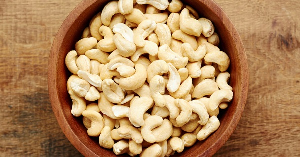The African Cashew Alliance (ACA) has indicated that recent volatility in the global cashew market may cause many kernel buyers to stand back – as the situation may well dim production targets of local producers, even in Ghana.
The sharp rise in prices in first-quarter of the year, well beyond even short-term sustainable levels, created a period of panic as cashew kernel prices hit US$3.80/lb only to fall back quickly to levels around US$3.25/lb from Vietnam, where they remain today.
That fall, according to ACA, has created a situation in which buyers may believe that further falls are imminent, as most are now waiting to see the next stage. Meanwhile, many processors are renegotiating contracts as market rises from US$2.40 to US$3.30/lb are impossible to manage for processors that still need to buy their full needs of RCN.
This scenario may cause a questioning by buyers of their cashew business, and may well lead to lower demand in second-half to end of the year.
Meanwhile, ACA has observed that the 2024 crop season in Ghana has seen lower production estimates, averaging 25-30 percent lower than last year, 2023.
This situation, according to ACA, makes Ghana the country worst-affected by weather conditions last year and this planting year.
“There are signs that some minor volumes will continue to flow due to some late flowering, but the main crops are ended. Prices at the farm gate for well-dried and bagged RCN were reported at GH¢12/kg, but trade is thin,” ACA noted.
The Alliance observed that crop estimation in the country is currently difficult, as volumes continue to flow from landlocked countries to the north and from Cote d’Ivoire.
What actually happened?
There is no doubt among most analysts that cashew prices were unsustainably low after Vietnamese processors, in similar panic mode, dropped prices to 14-year lows in mid-2023. RCN prices at the start of 2024 season were not in line with the low kernel prices.
Rumours of crop problems based on El Nino weather patterns started the rise in prices. The reality of a lower crop in Vietnam, some West African countries and probably India, meant that a rise in cashew kernel prices became inevitable.
Prices rose during March and April in a fairly orderly and healthy way. African processors were able to buy RCN at prices that farmers could live with and sell the resulting kernels on for forward shipment at a profit. Certainly, in some countries quality was lower and processing success, as always, would be a challenge – but it was workable.
Ivory Coast and the West African factor
Then the cashew ‘rumour mill’ kicked in. Driven by short-term expectations of quick gains, rumours of a crop failure in West Africa gained traction. Many processors in the Asian processing giants had only their suppliers’ information to rely on. Stories of 30 or 40 percent crop losses seemed to be confirmed by higher prices.
A move to suspend exports by the Ivorian authorities seemed to confirm the problem, and the scene was set for a short-lived speculative bubble.
Business News of Monday, 9 September 2024
Source: thebftonline.com













